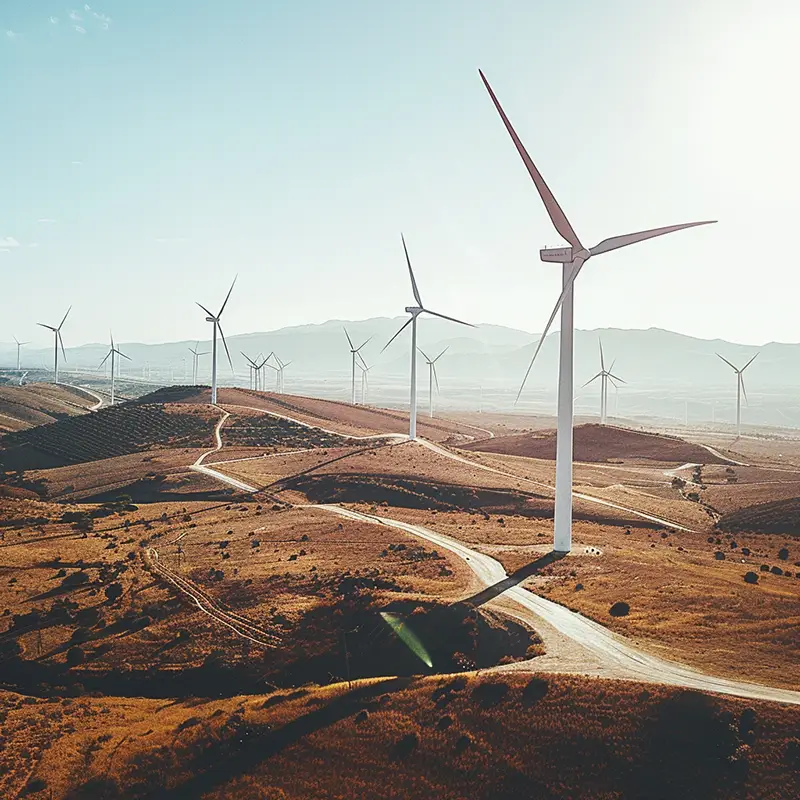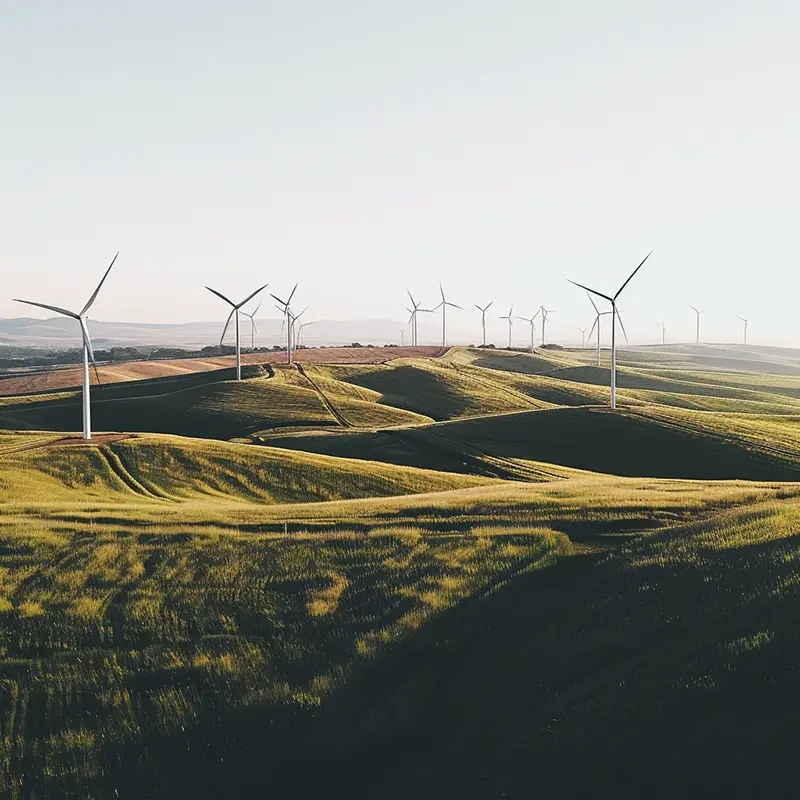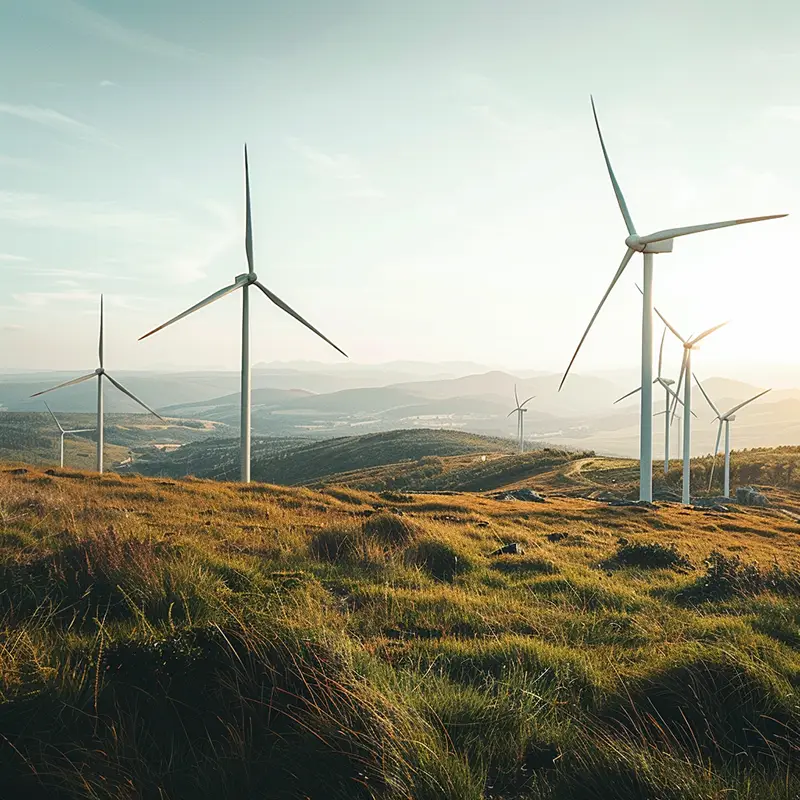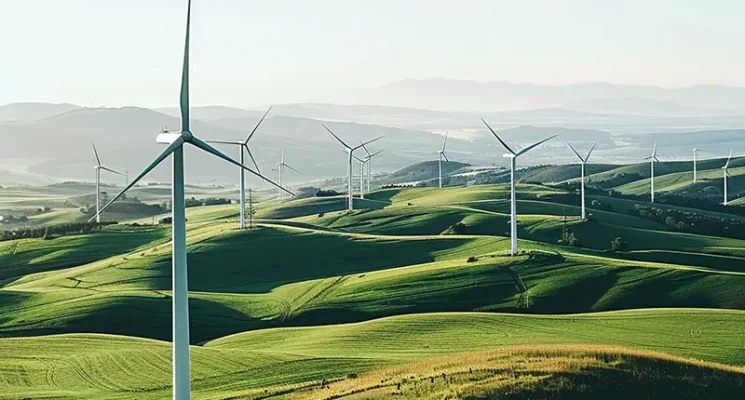How Modern Wind Farms Are Powering the Future
Sustainable Energy
Curious about how modern wind farms are leading the way towards a future powered by renewable energy?
Modern wind farms are propelling us towards a sustainable future by integrating advanced technology and innovative designs to generate clean electricity efficiently and cost-effectively. These advancements not only meet current energy demands but also set the stage for a global shift towards renewable energy sources, reducing dependence on fossil fuels and mitigating environmental impacts.
The wind industry continues to evolve, uncovering the ways in which these colossal structures are not only meeting current energy demands but also paving the way for a more sustainable tomorrow.
Technological Advancements in Wind Energy
TTechnological advancements have transformed wind energy, making onshore wind turbines more efficient and capable. Blade design innovations significantly enhance performance, leading to increased energy output and smoother grid integration. These advancements aim to boost efficiency and electricity generation in onshore wind farms. Improvements in aerodynamics and the use of advanced materials make wind turbines more efficient, facilitating better wind energy integration into power systems.
Global Growth and Adoption of Wind Power

The global growth and adoption of wind power are reshaping the energy landscape towards sustainability and independence. Significant increases in wind energy capacity result from global investments in onshore wind projects to decrease carbon emissions and enhance energy security. Policy support has accelerated wind power growth, establishing it as a globally cost-effective renewable energy source. Onshore wind projects provide stable prices and long-term investment opportunities, making wind power economically advantageous.
Wind power contributes to affordable electricity, lessens dependency on energy imports, and supports domestic prosperity and job creation. Its accessibility, efficiency, and low maintenance demands make it a sustainable choice for meeting energy needs.
Social and Environmental Impact Assessment
Assessing the social and environmental impact of wind energy projects is crucial for understanding their effects on communities and ecosystems.
- Community Engagement: Involving local communities ensures their concerns are addressed in project development.
- Land Conservation: Developing wind farms in a way that preserves valuable land for agriculture and other uses.
- Community Empowerment: Enabling communities to participate in and benefit from sustainable energy initiatives.
- Sustainable Practices: Promoting and implementing sustainable practices to minimize environmental harm throughout the project’s life cycle.
Considering these factors is essential for building positive community relationships, conserving natural habitats, empowering local stakeholders, and promoting sustainable practices that enhance social well-being and environmental quality.
Sustainable Development With Wind Farms

For sustainable development with wind farms, prioritize community engagement to guarantee local needs are met. By involving the community in wind farm projects, you ensure that the development aligns with the area’s requirements, fostering a sense of ownership and support. This approach not only enhances social acceptance but also allows for the effective integration of renewable energy solutions. Additionally, community involvement can lead to economic benefits through job creation and local investments, contributing to the region’s prosperity. Moreover, emphasizing land conservation practices when establishing wind farms aids in preserving valuable land for agriculture or other purposes, promoting environmental sustainability.
| Sustainable Development Factors | Description | Benefits |
|---|---|---|
| Land Conservation | Protecting land for various uses | Preserving natural resources and ecosystems |
| Community Engagement | Involving locals in project planning | Ensuring projects meet community needs |
| Renewable Integration | Incorporating wind energy into existing systems | Enhancing energy security and sustainability |
Challenges and Solutions in Wind Energy
When you face obstacles in wind energy deployment, you will require innovative solutions to ensure continued progress in sustainable power generation. When addressing challenges in wind energy, it’s essential to consider various factors that impact its efficiency and sustainability. Here are some key aspects to focus on:
- Extreme Weather and Turbine Optimization: Developing turbines that can withstand extreme weather conditions is crucial for consistent energy generation.
- AI Forecasting for Enhanced Efficiency: Using artificial intelligence for accurate weather forecasting can optimize turbine performance and output.
- Addressing Wind Farm Impacts: Implementing strategies to minimize environmental impacts such as harm to wildlife and energy-intensive construction processes is vital for sustainable wind energy.
- Water Conservation and Pollution Reduction: Promoting water conservation and reducing pollution in the manufacturing and operation of wind farms can enhance their overall sustainability.
Financial Viability of Wind Power
Understanding its cost-effectiveness and long-term benefits is crucial to ensuring wind power’s financial viability. Onshore wind power is recognized as the most economically efficient renewable energy source worldwide, providing electricity at competitive rates. Due to their economic advantages and financial sustainability, wind farms offer substantial investment opportunities.
Wind energy’s affordability is evident as it’s twice as inexpensive as offshore wind and nearly on par with fossil fuels. Fixed electricity prices for wind power over extended periods reduce price uncertainty, making it a financially competitive option for sustainable energy production.
Despite the high upfront installation costs of wind turbines, their low operational expenses, lack of fuel costs, and minimal maintenance requirements contribute to their overall cost-effectiveness. Embracing wind power not only ensures energy efficiency but also creates pathways for long-term financial gains, positioning wind farms as a profitable and sustainable investment choice for the future.
Future Innovations in Wind Turbines

Advancements in wind turbines are paving the way for innovative technologies that promise enhanced efficiency and sustainability.
- Blade design: Engineers are revolutionizing blade design to enhance aerodynamics and energy capture, maximizing wind turbines’ efficiency.
- Smart grids: Integration of wind turbines with smart grids enables better management of electricity production and distribution, enhancing overall grid stability.
- Offshore potential: Expanding into offshore wind farms opens up vast untapped wind resources, offering the potential for increased energy generation and reduced environmental impact.
- Energy storage: Developing efficient energy storage solutions allows wind farms to store excess energy and release it when needed, ensuring a more consistent and reliable power supply.
- Community engagement: Involving local communities in the planning and development of wind projects fosters support, promotes acceptance, and enhances the social benefits of wind energy initiatives.
The Takeaway
You’ve delved into the remarkable advancements in modern wind farms and their potential to revolutionize sustainable energy. With innovative technologies driving global growth and adoption, wind power is paving the way towards a cleaner, greener future.
Consider the social and environmental benefits, as well as the challenges and solutions in wind energy. Embrace the wind’s limitless power and join the movement towards a more sustainable tomorrow.
The future of energy is blowing in the wind.
